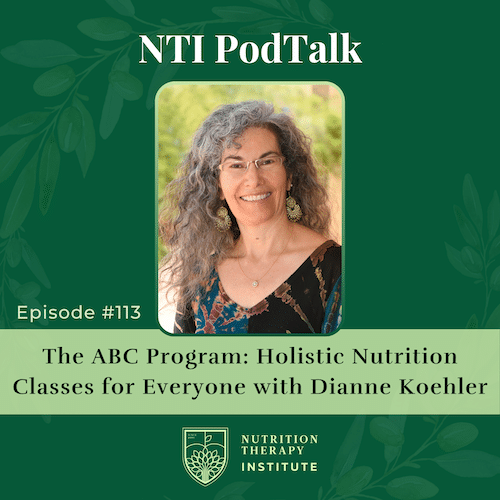
Share this post!
Is this a beautiful dish or what?! The ingredients for the stuffed squash are quite simple, but the presentation is what takes a dish like this to the next level. It can be served as a main or a side dish – either way, it’s a very impressive addition to the dinner table. The best part is that everything can be made in advance: roast the acorn squash, make the filling, and store everything in the fridge. Then, when you’re ready to serve, quickly assemble, pop the squash halves into the oven for 25 minutes, and wait for those “oohs” and “ahhs”…
Ingredients
- 5 acorn squash or sweet dumpling – cut in half crosswise, seeded
- ½ t freshly ground nutmeg
- 3 T olive oil
- 1 cup wild rice – uncooked
- 2 ½ cups vegetable broth
- ½ tsp salt, plus extra to taste
- 2 T olive oil
- 1 lb. ground turkey or chicken (optional)
- 1 large yellow onion, finely chopped
- 3 large garlic cloves, minced
- 3 large celery ribs, finely chopped
- 2 firm pears, peeled, halved lengthwise, cored, cut ½-inch dice
- 2 T minced sage
- 2 T minced fresh thyme leaves
- ⅔ cup minced fresh parsley
- ½ cup chopped walnuts or pecans, toasted
- ½ cup dried sweetened cranberries – rehydrated
Instructions
- Preheat the oven to 375-degree F. Cut each squash in half crosswise. Scoop out and discard the seeds and strings. Rub inside flesh with oil. Sprinkle each half with a little salt, pepper, and nutmeg to taste.
- Place on a rimmed baking sheet, cut side down. Bake for 30 minutes while preparing the stuffing.
- Meanwhile, combine the wild rice, vegetable broth, ¼ teaspoon salt in a medium saucepan. Bring to a boil over medium-high heat. Reduce the heat to a simmer, partially cover, and cook, stirring occasionally, until the rice is tender, about 40 minutes. When the rice is done most of the water should be evaporated.
- In a saute pan, heat the olive oil over medium heat. Saute the ground meat (if using) for 5 minutes; add the onion and celery until slightly softened, about 3-5 minutes. Add the garlic, pears, sage, thyme, and parsley and saute for 2 minutes. Remove from the heat.
- In a large bowl, combine the cooked rice, sauteed vegetables/pears, walnuts, and dried cranberries. Add salt and pepper to taste.
- Mount the rice mixture into the squash halves, dividing it evenly.
- Cut the 3 tablespoons of butter into small pieces. Dot each stuffed squash with butter.
- Cover with parchment and foil. Bake at 375-degree F until heated through, about 25 minutes.
Makes 10 halves
Why we love it
Vibrantly colored yellow and orange vegetables, like acorn squash, are a great source of beta-carotene, a type of carotenoid. Carotenoids are an antioxidant known for decreasing the risk of disease, particularly certain cancers and eye disease. The carotenoids shown to be particularly healthy in this regard include beta-carotene, lycopene, lutein, and zeaxanthin. Beta-carotene is a carotenoid you may be familiar with – beta-carotene is known for its ability to be converted to vitamin A (only 10% of carotenoids are vitamin A precursors!).
However, there is a common misconception that vegetables high in beta-carotene, such as carrots, sweet potatoes, squash, etc., are high in vitamin A. Let’s learn more…
Vitamin A has 2 forms:
- Preformed vitamin A. These are retinoids – Retinol, Retinal and Retinoic Acid. This form is found in animal foods (consumed as retinyl esters). Retinol is a highly bioavailable form of vitamin A.
- Provitamin A. This is a precursor to vitamin A, e.g. beta-carotene. This form is found mostly in plant foods.
Generally, retinyl esters from animal foods are more efficiently converted to retinol than beta-carotene. The body must intake 12ug of beta-carotene in order to convert this to 1ug of retinol, an active form of vitamin A. This means that you have to consume 12x more beta-carotene for the same effect as retinol! And this conversion rate applies only to beta-carotene – conversion of other carotenoids to vitamin A is even less efficient. So remember – these yellow/orange/red vegetables are high in beta-carotene (which is a super healthy antioxidant), but not in Vitamin A!
If you want to increase the conversion rate when eating beta-carotene rich vegetables, it is recommended that you:
- Consume these vegetables foods with fat (retinyl esters and carotenoids are fat soluble). In this Stuffed Squash recipe, we recommend adding butter to the squash halves. If you don’t eat butter, try some coconut oil instead, or a big drizzle of olive oil before eating!
- Cook your beta-carotene foods! This may seem counterintuitive because we might think that heat destroys the antioxidants. However, fiber impairs absorption of beta-carotene and other carotenoids. Cooking the food breaks down the fiber and increases the bioavailability of beta-carotene. In this recipe, we roast the squash until it is deliciously caramelized.
Learn more about Vitamin A and the most reliable foods in this great blog post by NTI Instructor Dr. Becky.
Recipe adapted from Professional Cooking
Related reading…
Rice Can Be A Superfood If You Do It Right
Want to learn how to create and prepare recipes like this?
Join our Natural Food Chef Program! Picture yourself in your kitchen surrounded by nothing but organic vegetables, whole grains, top-quality meats, eggs and a range of the more unusual things like pate, kimchi, kefir and bone broth. If you resonate with the idea of creating delicious meals that are not only healthy but downright regenerative, then join us for our 15-week program!
Daina Rasutis is a current student of NTI’s Nutrition Therapist Master Program. She plans to use her certification to spark a craving for health through movement, sustainable living and, of course, nourishing food. Follow Daina’s cooking creations and lifestyle tips on Instagram: @tabletocrave
Image use permission given by Table to Crave
Share this post!




















